Click on images to enlarge

Fig. 1. Tetranychus gloveri adult female paratype - detail of claw II.
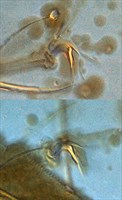
Fig. 2. Tetranychus gloveri adult female paratype - detail of claw III.
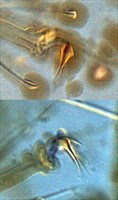
Fig. 3. Tetranychus gloveri adult female paratype - detail of claw IV.
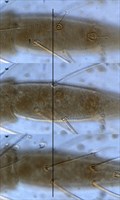
Fig. 4. Tetranychus gloveri adult female paratype - detail of tarsus I indicating the socket of one tactile seta proximal to proximal duplex seta (varying focal points - dorsal view above, ventral view below).
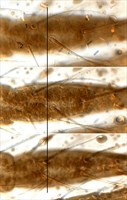
Fig. 5. Tetranychus gloveri adult female paratype - detail of tarsus I indicating the sockets of two tactile setae proximal to proximal duplex seta (varying focal points - dorsal view above, ventral view below).
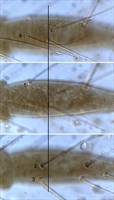
Fig. 6. Tetranychus gloveri adult female paratype - detail of tarsus I indicating the sockets of three tactile setae proximal to proximal duplex seta (varying focal points - dorsal view above, ventral view below).
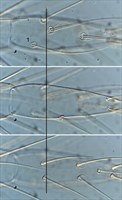
Fig. 7. Tetranychus gloveri adult female (non-type, Australia) - detail of tarsus I indicating the socket of one tactile seta proximal to proximal duplex seta (varying focal points - dorsal view above, ventral view below).

Fig. 8. Tetranychus gloveri adult female (non-type, Australia) - detail of tarsus I indicating the sockets of two tactile setae proximal to proximal duplex seta (varying focal points - dorsal view above, ventral view below).
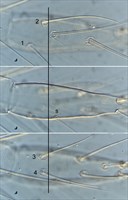
Fig. 9. Tetranychus gloveri adult female (non-type, Australia) - detail of tarsus I indicating the sockets of four tactile setae proximal to proximal duplex seta (varying focal points - dorsal view above, ventral view below).
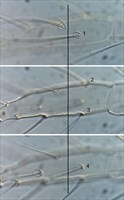
Fig. 10. Tetranychus gloveri adult female (non-type, Australia) - detail of tarsus I indicating the sockets of four tactile setae proximal to proximal duplex seta (varying focal points - dorsal view above, ventral view below).
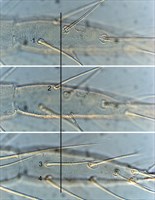
Fig. 11. Tetranychus gloveri adult female (non-type, Australia) - detail of tarsus I indicating the sockets of four tactile setae proximal to proximal duplex seta (varying focal points - dorsal view above, ventral view below).
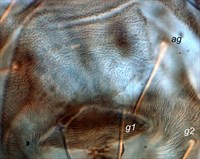
Fig. 12. Tetranychus gloveri adult female paratype - detail of patten of pregenital striae.
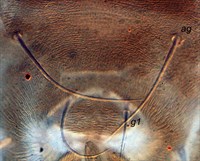
Fig. 13. Tetranychus gloveri adult female paratype - detail of patten of pregenital striae - note that posterior half of region not in focus; note large lobes on ventral striae.
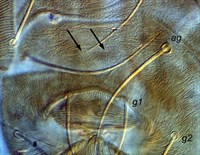
Fig. 14. Tetranychus gloveri adult female paratype - detail of patten of pregenital striae - arrows indicate anterior part of region in focus.
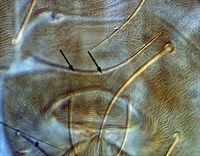
Fig. 15. Tetranychus gloveri adult female paratype - detail of patten of pregenital striae detail of patten of pregenital striae - same individual as Fig. 6 - arrows indicate posterior part of region in focus.

Fig. 16. Tetranychus gloveri adult female (non-type) - detail of periteme.
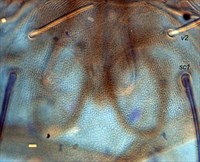
Fig. 17. Tetranychus gloveri adult female paratype - detail of patten of prodorsal striae.

Fig. 18. Tetranychus gloveri adult female paratype - detail of patten of prodorsal striae.
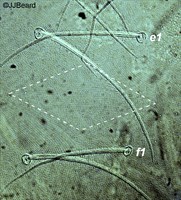
Fig. 19. Tetranycyus gloveri adult female (non-type) - pattern of dorsal striae between setae e1 and f1 = diamond.
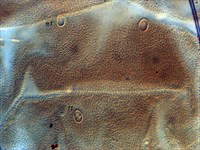
Fig. 20. Tetranychus gloveri adult female paratype - detail of pattern of dorsal striae between setae e1 and f1.

Fig. 21. Tetranychus gloveri adult female paratype - detail of pattern of dorsal striae between setae f1 and f2.
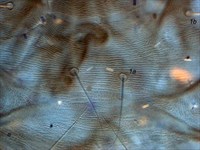
Fig. 22. Tetranychus gloveri adult female paratype - detail of patten of ventral striae with lobes as far anterior as setae 1a.

Fig. 23. Tetranychus gloveri adult male (non-type) - detail of claw I.
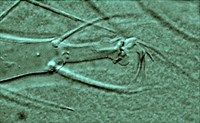
Fig. 24. Tetranychus gloveri adult male (non-type) - detail of claw II.

Fig. 25. Tetranychus gloveri adult males (non-types) - over view of variation in the aedeagus. Note that the specimens from Louisiana, USA, are from type host (cotton) and 130 km from type location.

Fig. 26. Tetranychus gloveri adult males (non-types) - detail of aedeagus of specimens from the type host cotton and 130 km from type location.
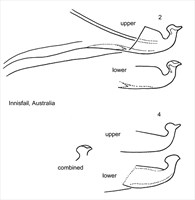
Fig. 27. Tetranychus gloveri adult males (non-types) - detail of aedeagus of specimens from Australia, indicating the change in shape from upper focus to lower focus.
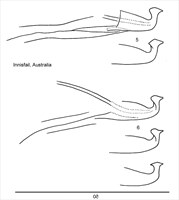
Fig. 28. Tetranychus gloveri adult males (non-types) - detail of aedeagus of specimens from Australia, indicating changes in shape at different focal points.
Material examined
types; non-types
Taxonomy
Subfamily Tetranychinae
Tribe Tetranychini
Common Name
-
Bank's spider mite
-
Cotton spider mite
-
Glover's spider mite
Distribution
+Australia, Bermuda, Brazil, Colombia, Costa Rica, Cuba, Dominican Republic, French Polynesia, Greece, Honduras, Mexico, Northern Marianas Islands, Panama, *USA, Venezuela
Taxonomy Changes
Tetranychus gloveri Banks 1900
Tetranychus quinquenychus McGregor 1914, synonymy Boudreaux 1979
Tetranychus antillarum Banks 1917, synonymy Boudreaux 1979
Diagnosis
Female
- empodia I-IV with obvious dorsomedial spur above proximoventral hairs (4-5 long); lower proximoventral hair strong, with thicken base (Figs 1-3)
- tarsus I - the number of proximal (and overlapping setae) varies on both the paratype females and the Australian material (four tactile setae and one-two solenidia are involved) (Figs 4-11):
- paratype females with the sockets of one-three tactile setae proximal to the socket of the proximal duplex seta (and one-three tactile setae overlapping) (Figs 4-6)
- Australian females with the sockets of one-four tactile setae proximal to the socket of the proximal duplex seta (and one-three tactile setae overlapping) (7-11)
- tarsus II with the sockets of three tactile setae and one solenidion proximal to, and one tactile seta overlapping, the socket of the duplex seta
- pregential striae longitudinal with strongly broken striae in anterior half (Figs 12-15)
- peritreme hook long (Fig. 16)
- prodorsum with longitudinal striae with obvious lobes (Figs 17-18)
- dorsal striae between setae e1 and f1 forming a diamond pattern - i.e. e1-e1 longitudinal; e1-f1 transverse; f1-f1 longitudinal (Figs 19-21)
- ventral striae with large lobes as far anterior as setae 1a (Figs 13, 22)
- body red
- eggs colourless when laid
Male
- empodia I-IV with obvious dorsomedial spur above proximoventral hairs (4-5 long); lower proximoventral hair thickened at base (Figs 23-24)
- empodium I with proximoventral hairs fused to form a claw (Fig. 23)
- aedeagus directed dorsally with strong neck and distinct knob; anterior projection broad and rounded; posterior projection short tapering triangular point; dorsal margin of knob strongly convex at one focal point, and with medial-posterior indentation forming distinct narrowing at one focal point (see Figs 26, 27); dorsal margin of shaft usually somewhat parallel with ventral margin of shaft, but can be at 5-10° angle to ventral margin (Figs 25-28)
- yellow-orange
Hosts
>110 recorded species of host plant, including: Abutilon indicum (Malvaceae), Amaranthus spinosus, A. tristis, A. viridis (Amaranthaceae), Apium graveolens (Apiaceae), Betula sp. (Betulaceae), Calotropis procera (Asclepiadaceae), Carica papaya (Caricaceae), Citrus sp. (Rutaceae), Dahlia coccinea, D. variabilis (Asteraceae), Euphorbia milii (Euphorbiaceae), Fragaria sp. (Rosaceae), *Gossypium sp., Gossypium barbadense, G. herbaceum, G. hirsutum, Hibiscus cannabinus (Malvaceae), Impatiens balsamina (Balsaminaceae), Ipomoea batatas, I. crassicaulis (Convolvulaceae), Lablab purpureus, Macroptilium lathyroides (Fabaceae), Mangifera indica (Anacardiaceae), Manihot esculenta (Euphoriaceae), Musa sapientum (Musaceae), Persea americana (Lauraceae), Phaseolus vulgaris, Pisum sativum (Fabaceae), Ricinis communis (Euphorbiaceae), Rosa sp. (Rosaceae), Salvia splendens (Lamiaceae), Sida acuta, S. rhombifolia (Malvaceae), Solanum melongena, S. tuberosum (Solanaceae), Stenotaphrum dimidiatum (Poaceae), Tagetes erecta (Asteraceae), Vigna unguiculata (Fabaceae), Xanthosoma robusta, X. violaceum (Araceae), Zea mays (Poaceae)
Similar Taxa
Tetranychus tumidis Banks
Biology
Tetranychus gloveri is reported as a serious pest of cotton, celery, beans, eggplant, beetroot, okra, peas and sweet potato, where it causes rusty speckling and blotches on leaves and their eventual death (Jeppson et al. 1975). Like many other species of spider mites, despite reports of its seriousness, little seems to be known of the biology of T. gloveri. The species prefers tropical and warm sub-tropical climates.
References
*Banks, N. (1900) The red spiders of the United States (Tetranychus and Stigmaeus). Unites States Department od Agriculture, Division of Entomology Technical Series, 8, 65-77
Banks, N. (1917) New mites, mostly economic (Arach. Acar.). Entomol. News 28: 193-199
Boudreaux, H.B. (1979) Confusion of names for the spider mites Tetranychus tumidus and T. gloveri. In: Recent Advances in Acarology Vol. II. (Ed. J.G. Rodriguez). Acadmeic Press: New York.
Davis, J.J. (1968) Oligonychus araneum sp. n. and Oligonychus digitatus Davis (Acarina: Tetranychidae). Journal of the Australian Entomological Society 7: 123-126
McGregor, E.A. (1914) Four new tetranychids. Annals of the Entomological Society of America 7: 354-364
Migeon, A. and Dorkeld, F. (2006-2017) Spider Mites Web: a comprehensive database for the Tetranychidae. http://www.montpellier.inra.fr/CBGP/spmweb
+Seeman, O.D. and Beard, J.J. (2011) Identification of exotic pest and Australian native and naturalised species of Tetranychus (Acari: Tetranychidae). Zootaxa 2961: 1-72
Womersley, H. (1942) Miscellaneous additions to the acarine fauna of Australia. Transactions of the Royal Society of South Australia 66: 85-92
Notes
The initial record of Tetranychus gloveri in Australia (Womersley 1942) is incorrect. The specimens concerned were actually individuals of Oligonychus digitatus, as noted by Davis (1968). See Seeman and Beard (2011) for further information and records in Australia.
Copyright © 2018. All rights reserved.